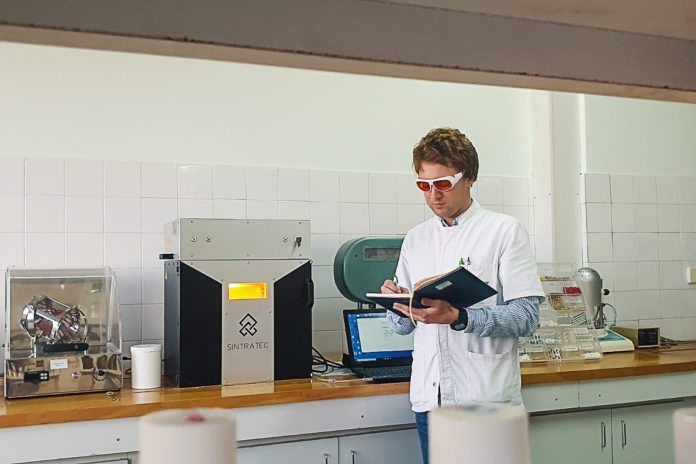The Faculty of Pharmacy of the University of Belgrade hosts a 3D printing laboratory named “Pharm3D” lab. Pharmacists from this lab explore the 3D printing of medications using several 3D printing techniques.
Professor Svetlana Ibric of the Department of Pharmaceutical Technology and Cosmetology at the University of Belgrade works on the development of controlled release dosage forms and process optimizations in the pharmaceutical field.
She played a key role in the creation of the 3D laboratory and research team. Her mission was to explore the possibilities offered by 3D printing in pharmacy. Today, students, scholars and professors of the institution now take advantage of this infrastructure.
3D printing of drugs
So far, 3D printing of drugs has already been made possible with SLS technology. The lab will continue to explore the opportunities of this technology and will even use the Sintratec Kit. However, according to Marijana Madzarevic, third-year PhD student in Pharmaceutical Technology, despite the great potential of SLS for this application, they will not exclude the possibilities of other technologies:
“We are proud to say that this is the first and for now only 3D laboratory of pharmaceutics in Serbia”, she says. In the so called “Pharm3D” three types of 3D printers are used: Fused Deposition Modelling (FDM), Stereolithography (SLA) and with latest addition of a Sintratec Kit also Selective Laser Sintering (SLS).”
Marijana and her team are investigating the applicability of various known pharmaceutical excipients with these additive technologies. Selective Laser Sintering awakened the scientist’s interest since – unlike the other types – its printing material is powder based which is already common for conventional pharmaceuticals.
Speaking of SLS technology, it should be noted that the technology has its pros and cons when it comes to producing medications.
For example, some excipients (e.g. mannitol or lactose) simply cannot be laser sintered into a stable tablet on their own. That is why Madzarevic’s team is focussing their research on different initiators to help with the solidification process.
“We want to investigate a variety of safe, pharmaceutical grade substances that help in the solidification of commonly available constituents of tablets and to easily form a tablet with target drug release (fast, slow, pulse), depending on the needs of the patients”, explained the researcher.
Lastly, as far as the Sintratec Kit is concerned, no more compression is required. Madzarevic said that they can put the mixture in the print container, click on print and have a tablet.
This aspect makes the technology particularly interesting because compression tends to be restricting. Replaced by this additive method a whole new array of possibilities opens up, ranging from intricate shapes of tablets to customized dose accommodations.
The massive potential of SLS in this field is evident. For pharmacists, however, the patients and their well-being are the bigger priority. Madzarevic lays emphasis on the fact that before any implementation, each technique has to be meticulously investigated, and its pros and cons thoroughly evaluated.
Remember, you can post free of charge job opportunities in the AM Industry on 3D ADEPT Media or look for a job via our job board. Make sure to follow us on our social networks and subscribe to our weekly newsletter : Facebook, Twitter, LinkedIn & Instagram ! If you want to be featured in the next issue of our digital magazine or if you hear a story that needs to be heard, make sure to send it to contact@3dadept.com.






